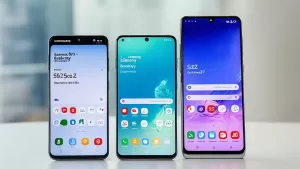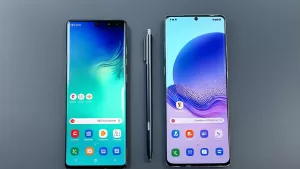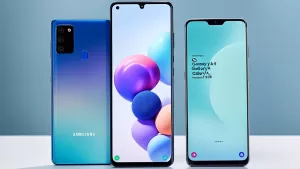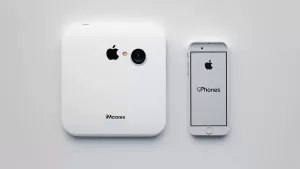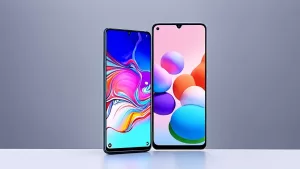When it comes to smartphones, the choices seem endless. But how do you know which one is right for you? In the world of Motorola, two popular models stand out: the Moto G 3rd Gen and the Moto X 2nd Gen. At first glance, they may seem similar, but upon closer inspection, you’ll discover some key differences that could make all the difference in your decision. So, what exactly sets these two devices apart? Let’s dive in and find out!
Key Takeaways:
- Construction and dimensions: The Moto G 3rd Gen features a polycarbonate body, while the Moto X 2nd Gen showcases an aluminum alloy design.
- Display and resolution: The Moto X 2nd Gen offers a slightly larger and higher resolution display compared to the Moto G 3rd Gen.
- Performance and processor: The Moto X 2nd Gen boasts a more powerful processor and double the RAM compared to the Moto G 3rd Gen.
- Camera features: Both devices have a 13-megapixel rear camera, but the Moto X 2nd Gen has a lower resolution front-facing camera.
- Connectivity options: The Moto X 2nd Gen supports faster Wi-Fi and USB 3.0, while the Moto G 3rd Gen offers standard connectivity options.
Construction and Dimensions
When it comes to construction and dimensions, the Motorola Moto G 3rd Gen and the Motorola Moto X 2nd Gen have some notable differences.
The Moto G 3rd Gen measures 142.1mm (5.59″) in height, 72.4mm (2.85″) in width, and 11.6mm (0.46″) in depth. It weighs 155 grams (5.47 ounces) and is constructed with a sturdy polycarbonate material.
In contrast, the Moto X 2nd Gen has a slightly smaller height of 140.8mm (5.54″), the same width of 72.4mm (2.85″), and a thinner depth of 10mm (0.39″). It weighs 144 grams (5.08 ounces) and features an elegant aluminum alloy body, giving it a sleek and premium feel.
Summary of Construction and Dimensions:
| Model | Height | Width | Depth | Weight | Material |
|---|---|---|---|---|---|
| Moto G 3rd Gen | 142.1mm (5.59″) | 72.4mm (2.85″) | 11.6mm (0.46″) | 155g (5.47 oz) | Polycarbonate |
| Moto X 2nd Gen | 140.8mm (5.54″) | 72.4mm (2.85″) | 10mm (0.39″) | 144g (5.08 oz) | Aluminum alloy |
Display and Resolution
When it comes to the display, both the Motorola Moto G 3rd Gen and the Motorola Moto X 2nd Gen offer immersive visual experiences. The Moto G 3rd Gen features a 5.0-inch display, while the Moto X 2nd Gen boasts a slightly larger 5.2-inch display. The size difference may be minimal, but it can still impact your overall viewing and usage experience.
Resolution plays a crucial role in determining the sharpness and clarity of the display. The Moto G 3rd Gen comes with a resolution of 720×1280 pixels, which is more than sufficient for most users. The higher pixel density of approximately 294 PPI ensures that images and text appear crisp and detailed.
On the other hand, the Moto X 2nd Gen raises the bar with a higher resolution of 1080×1920 pixels, delivering sharper visuals and finer details on its display. With a pixel density of approximately 424 PPI, you can expect stunning clarity and vibrant colors that bring content to life.
Whether you prioritize a slightly larger screen size or crave a higher resolution for a more visually engaging experience, both smartphones offer excellent display options. Consider your preferences and usage patterns to determine which device aligns best with your needs.
Comparison table: Display and Resolution
| Smartphone | Display Size | Resolution | Pixel Density |
|---|---|---|---|
| Motorola Moto G 3rd Gen | 5.0 inches | 720×1280 pixels | Approximately 294 PPI |
| Motorola Moto X 2nd Gen | 5.2 inches | 1080×1920 pixels | Approximately 424 PPI |
As demonstrated in the table above, the Moto G 3rd Gen offers a slightly smaller display with a resolution of 720×1280 pixels and a pixel density of approximately 294 PPI. In comparison, the Moto X 2nd Gen presents a larger 5.2-inch display with a higher resolution of 1080×1920 pixels, resulting in a pixel density of approximately 424 PPI. These differences contribute to varying levels of visual quality and sharpness, allowing you to choose the device that best suits your preferences and requirements.
Performance and Processor
When it comes to performance, the Motorola Moto G 3rd Gen and the Motorola Moto X 2nd Gen offer different capabilities due to variations in their processors, RAM, and internal memory.
The Moto G 3rd Gen is equipped with a Qualcomm Snapdragon 410 processor, featuring 4 cores clocked at 1.4GHz. It also comes with an Adreno 306 GPU, ensuring smooth graphics performance. With 1GB of RAM and 8GB of internal memory, this device delivers decent performance for everyday tasks.
On the other hand, the Moto X 2nd Gen steps up the game with a Qualcomm Snapdragon 801 processor. This processor boasts 4 cores clocked at 2.5GHz, providing faster processing speeds. It is complemented by an Adreno 330 GPU, delivering enhanced graphics performance. With 2GB of RAM and 16GB of internal memory, the Moto X offers superior multitasking capabilities and ample storage space for your apps and media.
It’s worth noting that the Moto X 2nd Gen’s processor and higher RAM make it a more suitable choice for demanding tasks such as gaming or multitasking between resource-heavy apps.
Take a closer look at the comparison table below to see the detailed specifications:
| Specification | Moto G 3rd Gen | Moto X 2nd Gen |
|---|---|---|
| Processor | Qualcomm Snapdragon 410, 1.4GHz Quad-Core | Qualcomm Snapdragon 801, 2.5GHz Quad-Core |
| GPU | Adreno 306 | Adreno 330 |
| RAM | 1GB | 2GB |
| Internal Memory | 8GB | 16GB |
With this information, you can now make an informed decision about which device suits your performance needs, whether you prioritize seamless multitasking, gaming, or a more budget-friendly option.
Camera Features
Both the Motorola Moto G 3rd Gen and the Motorola Moto X 2nd Gen come equipped with impressive camera features that allow you to capture stunning photos and videos.
The rear camera on both devices boasts a high-resolution of 13 megapixels, ensuring sharp and detailed images. Additionally, both smartphones are equipped with a dual LED flash, which provides excellent lighting in low-light environments, allowing you to capture clear and vibrant photos even in challenging conditions.
When it comes to selfies, the Motorola Moto G 3rd Gen features a 5-megapixel front-facing camera, while the Moto X 2nd Gen sports a 2-megapixel front-facing camera. So whether you’re taking a group selfie or capturing your own perfect portrait, these smartphones have you covered.
With these camera features, you can confidently document and share your favorite moments with friends and family, knowing that your photos and videos will be of exceptional quality.
| Camera Features | Moto G 3rd Gen | Moto X 2nd Gen |
|---|---|---|
| Rear Camera Resolution | 13 megapixels | 13 megapixels |
| Front-Facing Camera Resolution | 5 megapixels | 2 megapixels |
| Flash | Dual LED | Dual LED |
Connectivity Options
When it comes to connectivity, both the Motorola Moto G 3rd Gen and the Motorola Moto X 2nd Gen offer a range of options to keep you connected on the go.
The Motorola Moto G 3rd Gen supports Wi-Fi 802.11 b/g/n, allowing you to connect to Wi-Fi networks for fast and reliable internet access. It also features Bluetooth 4.0 technology, enabling you to pair your device with other compatible devices such as headphones or speakers. In addition, the Moto G 3rd Gen comes with a USB v2.0 port, allowing you to connect it to your computer for data transfer and charging.
On the other hand, the Motorola Moto X 2nd Gen takes connectivity to the next level. It supports faster Wi-Fi 802.11 a/b/g/n/ac, providing you with even faster internet speeds and improved coverage. With Bluetooth 4.0, you can easily connect your Moto X 2nd Gen to a wide range of peripherals, including wireless headphones and speakers. Additionally, the Moto X 2nd Gen features a USB v3.0 port, which offers faster data transfer speeds when connected to a compatible device.
Both devices also come with integrated GPS, allowing you to navigate and locate your position accurately.
Stay connected with the connectivity options offered by the Motorola Moto G 3rd Gen and the Motorola Moto X 2nd Gen.
Battery Life
One of the important factors to consider when choosing a smartphone is its battery life. The Motorola Moto G 3rd Gen comes with a 2470mAh non-removable battery, while the Motorola Moto X 2nd Gen is equipped with a slightly smaller 2300mAh non-removable battery. This means that the Moto G has a higher battery capacity compared to the Moto X.
However, it’s important to note that battery life may vary depending on your usage patterns and other factors such as screen brightness, app usage, and network connectivity. So, while the Moto G has a higher capacity, it doesn’t necessarily mean it will provide longer battery life than the Moto X in every scenario.
Nevertheless, both smartphones offer decent battery life and should be able to get you through a full day of moderate usage without requiring frequent recharging. If you’re a heavy user or tend to rely heavily on your smartphone throughout the day, you may want to consider factors like battery life and capacity when making your decision.
To give you a better idea of the actual battery performance, here’s a comparison of the estimated battery life for both devices under typical usage:
| Device | Battery Life |
|---|---|
| Motorola Moto G 3rd Gen | Up to 24 hours of mixed usage |
| Motorola Moto X 2nd Gen | Up to 20 hours of mixed usage |
As you can see, the Moto G offers a slightly longer estimated battery life compared to the Moto X. However, it’s essential to consider that these are estimated values and can vary depending on individual usage patterns and settings.
Factors Affecting Battery Life
There are several factors that can impact the battery life of your smartphone. Here are a few key considerations:
- Screen Brightness: Higher screen brightness settings consume more battery power. Adjusting the brightness level to a lower setting can help conserve battery life.
- App Usage: Running resource-intensive apps in the background or using apps that constantly require internet connectivity can drain your battery faster. Closing unused apps and optimizing app settings can help prolong battery life.
- Network Connectivity: Weak cellular signal or constantly switching between network connections can have a negative impact on battery life. If possible, try to maintain a stable and strong network connection.
- Power Saving Mode: Most smartphones offer power saving modes that can help extend battery life. Enabling power-saving features can limit background activities and adjust settings to conserve power.
By considering these factors and adopting power-saving habits, you can help maximize the battery life of your Motorola Moto G 3rd Gen or Motorola Moto X 2nd Gen.
Price and Availability
The Motorola Moto G 3rd Gen was released in May 2015 and was priced at approximately 250 EUR at that time. Offering great value for its features, this smartphone became highly popular among users seeking a cost-effective option with reliable performance.
In comparison, the Motorola Moto X 2nd Gen was released in September 2014 with a price tag of around 320 EUR. This premium device aimed at users who valued high-end specifications and sleek design.
Please note that prices and availability for both models may vary over time and in different regions. It is always recommended to check with authorized retailers or online platforms to get the most accurate and up-to-date information on pricing and availability.
